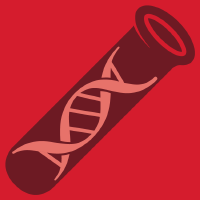Topic Menu
► Topic MenuTopic Editors


Cancer Biology and Therapy
Topic Information
Dear Colleagues,
Despite significant treatment improvements having been achieved with the advent of targeted and immune checkpoint inhibitor-based therapies, cancer still remains one of the first causes of death worldwide. Recent data suggest that resistance to targeted therapies as well as worse response to chemo-immunotherapy may be predicted by specific genetic backgrounds. Furthermore, tumor aggressiveness and resistance to treatments are not only driven by tumor-cell-intrinsic features, but also by the fine-tuned cross-talk with the tumor microenvironment (TME—i.e., fibroblasts, endothelial cells, and immune system cells). Interestingly, tumor microenvironment (TME) cross-talk may be mediated by direct contact, or by molecule or extracellular vesicle secretion, further increasing cancer biology complexity.
Therefore, this Topic will consider articles on all types of research on the biology of cancer and on the interconnection of tumor cells with the TME, with special attention on features related to aggressiveness, dissemination and resistance to specific treatments. This Topic will consider research on all types of cancers, in an effort to find commonalities that may link different tumors.
Additionally, submission of research on the impact of the “tumor macroenvironment” (microbiota, diet, physical exercise, etc.) on tumor biology will also be welcome.
Dr. Massimo Moro
Dr. Luca Falzone
Topic Editors
Keywords
- cancer biology
- resistance to treatment
- resistance mutations
- tumor microenvironment
- secretome
- extracellular vesicles
- immune checkpoint inhibitors
- targeted therapy
Participating Journals
| Journal Name | Impact Factor | CiteScore | Launched Year | First Decision (median) | APC |
|---|---|---|---|---|---|

Biomedicines
|
4.7 | 3.7 | 2013 | 15.4 Days | CHF 2600 |

Reports
|
0.9 | - | 2018 | 20.6 Days | CHF 1400 |

Current Issues in Molecular Biology
|
3.1 | 2.4 | 1999 | 13.5 Days | CHF 2200 |

BioMed
|
- | - | 2021 | 27 Days | CHF 1000 |

Diagnostics
|
3.6 | 3.6 | 2011 | 20.7 Days | CHF 2600 |

MDPI Topics is cooperating with Preprints.org and has built a direct connection between MDPI journals and Preprints.org. Authors are encouraged to enjoy the benefits by posting a preprint at Preprints.org prior to publication:
- Immediately share your ideas ahead of publication and establish your research priority;
- Protect your idea from being stolen with this time-stamped preprint article;
- Enhance the exposure and impact of your research;
- Receive feedback from your peers in advance;
- Have it indexed in Web of Science (Preprint Citation Index), Google Scholar, Crossref, SHARE, PrePubMed, Scilit and Europe PMC.

